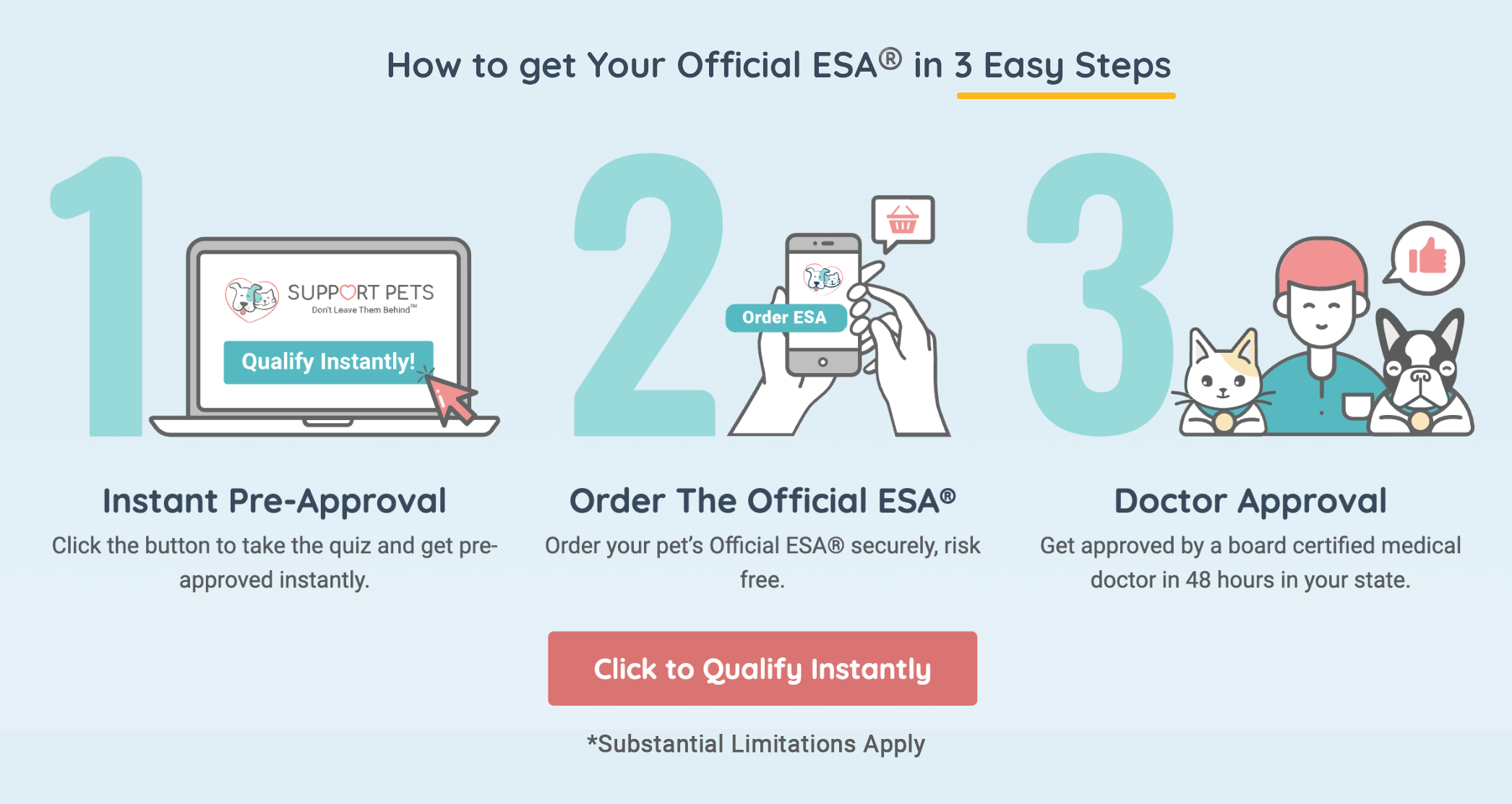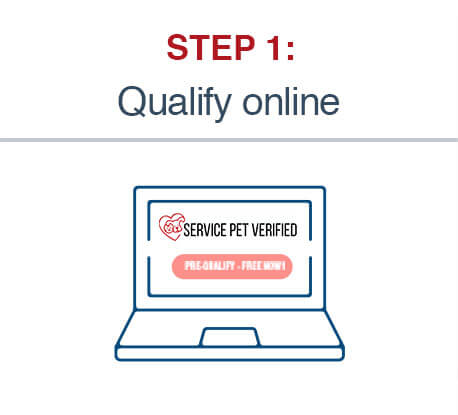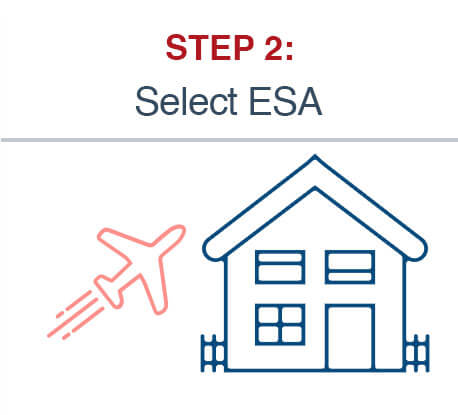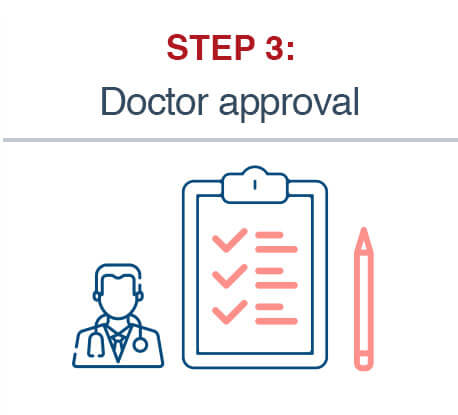Are you a pet owner and wondering how to avoid paying pet deposits? The costs associated with pet ownership can accumulate rapidly, and pet deposits frequently represent a substantial expense for renters. Fortunately, there are ways to minimize or even eliminate these fees, especially if you have an emotional support animal (ESA).
What is Pet Rent?
Pet rent is a monthly fee that landlords charge to allow pets in a rental property. This fee is separate from the regular rent and is meant to cover any damages caused by pets. Pet deposits are usually a one-time fee and are refundable if there are no damages. With an ESA letter, you can avoid paying both pet rent and pet deposits because the FHA protects your rights as a pet owner.
Is It Legal to Charge Pet Rent and Pet Deposit?
The Fair Housing Act (FHA) states that landlords cannot charge pet rent or a pet deposit for emotional support animals (ESAs). This means you don’t have to pay monthly pet rent or a pet deposit if you have an ESA. However, landlords can charge a security deposit, which is refundable if there are no damages caused by your pet. You need to know your rights and ensure landlords do not charge you fees that are not allowed. If you have an ESA, make sure to remind your landlord to avoid paying unnecessary fees.
Are Pet Deposits Refundable?
Pet deposits are usually refundable if there are no damages caused by your furry friend. This means that when you move out, you should get your deposit back if your pet didn’t damage the rental property. However, if there are pet-related damages, the landlord may use the deposit to cover the repair costs. Always check your rental agreement for specific details about the deposit to know how it works.
What is an Emotional Support Animal (ESA)?
An Emotional Support Animal (ESA) is a special pet that offers emotional support and comfort to its owner. Unlike service animals, ESAs do not need special training to perform tasks. They are important for the mental health and wellbeing of their owners. If you have an ESA, you don’t have to pay pet rent or a pet deposit. The Housing Act (FHA) protects your rights as an ESA owner.
The Fair Housing Act (FHA) and ESAs
The Fair Housing Act (FHA) stops housing providers from discriminating based on race, religion, gender, sexuality, national origin, family status, and disability. This means that landlords have to make “reasonable accommodations” for assistance animals. According to this law, emotional support animals (ESAs) and service dogs are considered medical aids and not just regular pets.
Who Qualifies for an Emotional Support Animal?
To qualify for an Emotional Support Animal (ESA), you need a letter from a licensed mental health that it is helpful for your mental health and wellbeing. Your pet isn’t just a friend; it’s essential for your emotional support.
With this letter, you don’t have to pay a pet deposit or monthly pet rent. The Housing Act (FHA) protects you and ensures landlords can’t charge fees for your ESA. This means you can avoid paying extra and keep your furry friend by your side.
How to Get an ESA Letter with Support Pets?
An Emotional Support Animal (ESA) Letter will serve as the required documentation for protecting your rights under ESA laws. You may also hear it referred to as an emotional support animal prescription or comfort animal letter. If you’re interested in obtaining an ESA letter with Support Pets, here’s what you need to know:
1. Instant Pre-Approval
- Click here or the button in the infographic below to take the quiz and get pre-approved instantly.
- The quiz is designed to assess your eligibility quickly and efficiently, ensuring that you can start the process without any delay.
2. Order the Official ESA®
- Once pre-approved, you can order your pet’s Official ESA® letter securely and risk-free.
- This step involves providing necessary details about your emotional support animal and completing the payment process.
- Our secure system ensures your information is protected throughout the ordering process.
3. Doctor Approval
- After placing your order, you will be connected by a licensed medical professional.
- Get approved by a board-certified medical doctor in 48 hours in your state.
- The doctor will review your quiz responses and any additional information provided to confirm your need for an ESA.
- Once approved, your ESA letter will be issued on the doctor’s official letterhead, including their license number and signature.
Additional Information:
- Licensed Professional: An approved ESA Letter can only be provided by a licensed mental health professional or doctor.
- Official Letterhead: The ESA Letter must be printed on the health provider’s official letterhead.
- Content of the Letter: The letter should state that:
- You have a diagnosed mental condition.
- Your emotional support animal is important to your well-being.
- Signature and Details: The letter must:
- Be signed and dated by your mental health care professional or doctor.
- Include their license number and the date it was issued.
- Validity and Renewal: An ESA Letter is valid for one year from the date of issue and will need to be renewed annually.
- Additional Information: In certain situations, you should request specific information be included in your ESA Letter, such as the type, breed, and weight of your ESA animal.
By understanding these rules and your rights, you can avoid paying unnecessary fees and ensure your pet is recognized as a crucial part of your life. Your ESA is not just a pet; it’s a crucial part of your wellbeing. Make sure to protect your rights and take our quiz to get your ESA letter with Support Pets!















